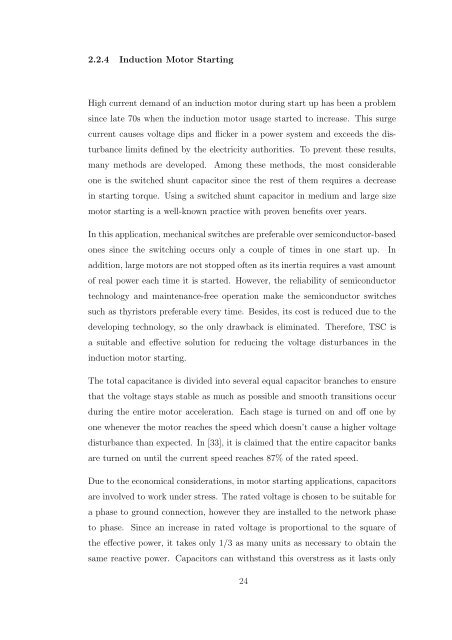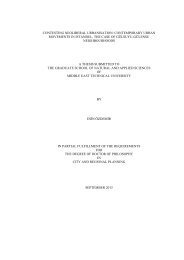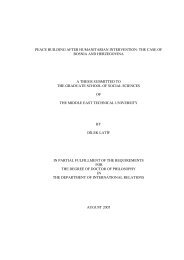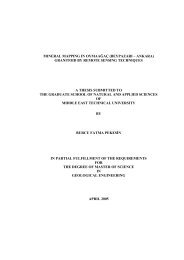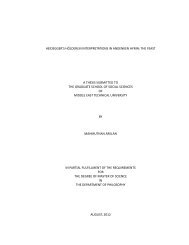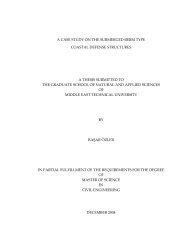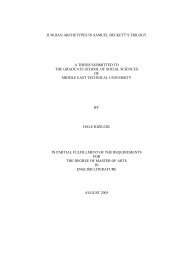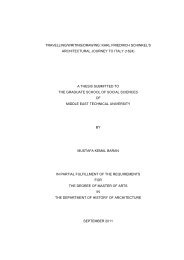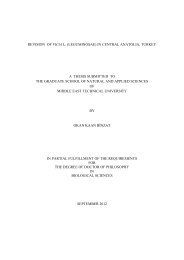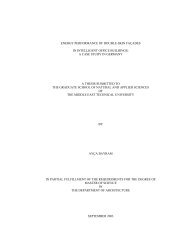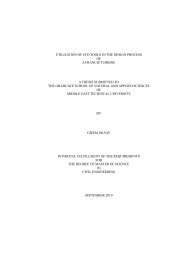design and implementation of thyristor switched shunt capacitors a ...
design and implementation of thyristor switched shunt capacitors a ...
design and implementation of thyristor switched shunt capacitors a ...
You also want an ePaper? Increase the reach of your titles
YUMPU automatically turns print PDFs into web optimized ePapers that Google loves.
2.2.4 Induction Motor Starting<br />
High current dem<strong>and</strong> <strong>of</strong> an induction motor during start up has been a problem<br />
since late 70s when the induction motor usage started to increase. This surge<br />
current causes voltage dips <strong>and</strong> flicker in a power system <strong>and</strong> exceeds the disturbance<br />
limits defined by the electricity authorities. To prevent these results,<br />
many methods are developed. Among these methods, the most considerable<br />
one is the <strong>switched</strong> <strong>shunt</strong> capacitor since the rest <strong>of</strong> them requires a decrease<br />
in starting torque. Using a <strong>switched</strong> <strong>shunt</strong> capacitor in medium <strong>and</strong> large size<br />
motor starting is a well-known practice with proven benefits over years.<br />
In this application, mechanical switches are preferable over semiconductor-based<br />
ones since the switching occurs only a couple <strong>of</strong> times in one start up. In<br />
addition, large motors are not stopped <strong>of</strong>ten as its inertia requires a vast amount<br />
<strong>of</strong> real power each time it is started. However, the reliability <strong>of</strong> semiconductor<br />
technology <strong>and</strong> maintenance-free operation make the semiconductor switches<br />
such as <strong>thyristor</strong>s preferable every time. Besides, its cost is reduced due to the<br />
developing technology, so the only drawback is eliminated. Therefore, TSC is<br />
a suitable <strong>and</strong> effective solution for reducing the voltage disturbances in the<br />
induction motor starting.<br />
The total capacitance is divided into several equal capacitor branches to ensure<br />
that the voltage stays stable as much as possible <strong>and</strong> smooth transitions occur<br />
during the entire motor acceleration. Each stage is turned on <strong>and</strong> <strong>of</strong>f one by<br />
one whenever the motor reaches the speed which doesn’t cause a higher voltage<br />
disturbance than expected. In [33], it is claimed that the entire capacitor banks<br />
are turned on until the current speed reaches 87% <strong>of</strong> the rated speed.<br />
Due to the economical considerations, in motor starting applications, <strong>capacitors</strong><br />
are involved to work under stress. The rated voltage is chosen to be suitable for<br />
a phase to ground connection, however they are installed to the network phase<br />
to phase. Since an increase in rated voltage is proportional to the square <strong>of</strong><br />
the effective power, it takes only 1/3 as many units as necessary to obtain the<br />
same reactive power. Capacitors can withst<strong>and</strong> this overstress as it lasts only<br />
24


